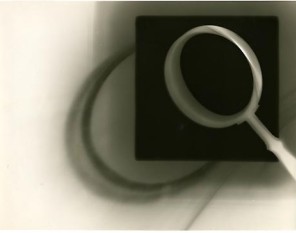Photographs from the Thirties
ELFRIEDE STEGEMEYER
February 2nd – April 20th, 2002
The exhibition Elfriede Stegemeyer – Photographs from the Thirties, introduces an artist who went her own way in a time of extreme political turmoil. During a period of oppression and persecution of the artistic avant-garde, Elfriede Stegemeyer developed – counter to the official aesthetics propagated by the National Socialists – an open, experimental approach to the photographic medium, which has won her a special place in the history of German photography during the 1930s.
Elfriede Stegemeyer’s (1908-1988) beginnings in photography and her development of an independent photographic oeuvre were predominantly of an autodidactic nature. From an upper class background (Kaffee HAG), she studied at the Staatliche Kunstschule art school in Berlin, and in 1932 followed the painter Otto Coenen to Cologne, where she lived until 1939. Here, she attended the photography class held at the Cologne Werkschulen. Her only fellow student in the class was Raoul Ubac. Through Coenen, Elfriede Stegemeyer was introduced into the circle of the Kölner Progressive (Cologne Progressives) centred around Franz W. Seiwert and Heinrich Hoerle. She became a member of the Cologne resistance group Rote Kämpfer (Red Fighters).
During this period, Elfriede Stegemeyer experimented extensively with photography and, influenced by the photographic avant-garde of the Weimar Republic, she explored the boundaries and possibilities of the medium. Her work was principally based on the world of everyday objects, which she used as material for her photograms, photomontages, multiple exposures etc. She predominantly employed glass objects, especially drinking glasses for her studies, intended for a (never published) book Die Schule des Sehens (The School of Seeing). She arranged objects in unusual perspectives and dynamic arrangements, creating effects of light and shade. In addition to the still lifes and experimental work, she also photographed Cologne and its environs; a series of shop window mannequins are particularly noteworthy.
In 1935 she travelled with Coenen to Paris. Here, a close relationship developed between her and Raoul Hausmann, with whom she stayed for several months at Ibiza. On the island, she photographed architecture and landscapes. Later, during journeys to eastern Europe, she documented the everyday life of the population there until 1938. Her return to Berlin in 1939 and the outbreak of war in 1939, marked the end of her independent artistic work. In 1941, she was arrested by the Gestapo for high treason, but was released again. Sadly, a large part of her oeuvre was destroyed during a bombing raid in 1943. After the war, she began a second artistic career under the name of elde steeg.
The exhibition Elfriede Stegemeyer – Photographs from the Thirties, introduces an artist who went her own way in a time of extreme political turmoil. During a period of oppression and persecution of the artistic avant-garde, Elfriede Stegemeyer developed – counter to the official aesthetics propagated by the National Socialists – an open, experimental approach to the photographic medium, which has won her a special place in the history of German photography during the 1930s.
Elfriede Stegemeyer’s (1908-1988) beginnings in photography and her development of an independent photographic oeuvre were predominantly of an autodidactic nature. From an upper class background (Kaffee HAG), she studied at the Staatliche Kunstschule art school in Berlin, and in 1932 followed the painter Otto Coenen to Cologne, where she lived until 1939. Here, she attended the photography class held at the Cologne Werkschulen. Her only fellow student in the class was Raoul Ubac. Through Coenen, Elfriede Stegemeyer was introduced into the circle of the Kölner Progressive (Cologne Progressives) centred around Franz W. Seiwert and Heinrich Hoerle. She became a member of the Cologne resistance group Rote Kämpfer (Red Fighters).
During this period, Elfriede Stegemeyer experimented extensively with photography and, influenced by the photographic avant-garde of the Weimar Republic, she explored the boundaries and possibilities of the medium. Her work was principally based on the world of everyday objects, which she used as material for her photograms, photomontages, multiple exposures etc. She predominantly employed glass objects, especially drinking glasses for her studies, intended for a (never published) book Die Schule des Sehens (The School of Seeing). She arranged objects in unusual perspectives and dynamic arrangements, creating effects of light and shade. In addition to the still lifes and experimental work, she also photographed Cologne and its environs; a series of shop window mannequins are particularly noteworthy.
In 1935 she travelled with Coenen to Paris. Here, a close relationship developed between her and Raoul Hausmann, with whom she stayed for several months at Ibiza. On the island, she photographed architecture and landscapes. Later, during journeys to eastern Europe, she documented the everyday life of the population there until 1938. Her return to Berlin in 1939 and the outbreak of war in 1939, marked the end of her independent artistic work. In 1941, she was arrested by the Gestapo for high treason, but was released again. Sadly, a large part of her oeuvre was destroyed during a bombing raid in 1943. After the war, she began a second artistic career under the name of elde steeg.


